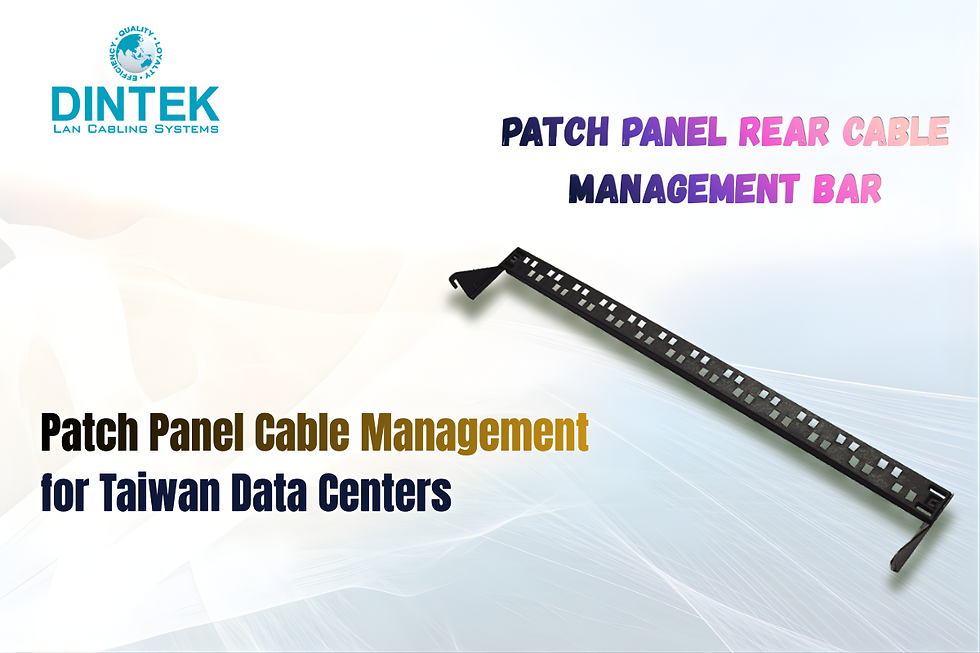Benefits of Industrial Category 6A Cable and Single Mode Fiber Cable - DINTEK
- dinteklancabling
- Aug 6, 2024
- 3 min read
In today's fast-paced industrial environment, the need for robust, high-speed, and reliable data transmission is more critical than ever. Two prominent solutions that stand out in this domain are Industrial Category 6A cable and Single Mode Fiber cables. These cables are engineered to meet the demanding requirements of industrial applications, providing a host of benefits that make them essential for modern industrial communication networks. Here, we delve into the key advantages of Cat 6A and single mode fiber cable.

Industrial Category 6A Cable
1. High-Speed Data Transmission
Industrial Cat 6A cables are designed to support data transmission speeds of up to 10 Gbps over a distance of 100 meters. This high-speed capability is crucial for industrial environments where large volumes of data are generated and need to be transmitted quickly and reliably.
2. Enhanced Performance
Cat 6A cables offer improved performance in terms of crosstalk and system noise. This is particularly important in industrial settings with dense cabling and high electromagnetic interference (EMI).
3. Durability and Reliability
Industrial Cat 6A cables are constructed with rugged materials to withstand harsh conditions, including extreme temperatures, moisture, and physical wear and tear. Their robust design ensures long-term reliability, reducing the need for frequent replacements and maintenance.
4. Future-Proofing
Investing in Cat 6A cables is a future-proof decision. As industrial applications continue to evolve and demand higher data rates, Cat 6A provides the necessary bandwidth and performance headroom to accommodate future technological advancements without requiring extensive network overhauls.
Single Mode Fiber Cable
1. Long-Distance Transmission
Single Mode Fiber cables are renowned for their ability to transmit data over long distances with minimal signal loss. Unlike multimode fibers, SMF cables can cover distances of several kilometers, making them ideal for large-scale industrial operations that span vast areas.
2. High Bandwidth Capacity
Single Mode Fiber cable offer an exceptionally high bandwidth capacity, supporting high data rates that are essential for modern industrial applications. This high capacity allows for the transmission of large datasets, real-time video, and other bandwidth-intensive applications without congestion or delay.
3. Immunity to Electromagnetic Interference
One of the significant advantages of single mode fiber cable is their immunity to electromagnetic interference (EMI). In industrial environments, where heavy machinery and electrical equipment can generate substantial EMI, single mode fiber cable cables ensure reliable data transmission without degradation in signal quality.
4. Future-Proof Infrastructure
Like Cat 6A, SMF cables provide a future-proof solution for industrial networking needs. Their ability to handle increasing data rates and long-distance transmissions means they can support the growing demands of industrial IoT, automation, and other advanced applications well into the future.
Combined Benefits
Using a combination of Cat 6A and single mode fiber cable can significantly enhance an industrial network's performance and reliability. Cat 6A cables can be deployed within buildings and shorter distances to handle high-speed data transmission needs, while single mode fiber cable can be used for long-distance connections between facilities or across large industrial sites.
1. Comprehensive Coverage
By integrating both cable types, industrial operations can achieve comprehensive network coverage that addresses both short-range and long-range communication requirements. This hybrid approach ensures seamless data flow across all parts of the industrial operation.
2. Cost-Effective Solutions
While Ssingle mode fiber cable may be more expensive upfront due to their advanced capabilities, the combination with Cat 6A cables provides a cost-effective solution. Cat 6A cables can handle high-speed needs within shorter distances cost-efficiently, while single mode fiber cable are reserved for critical long-distance transmissions.
3. Enhanced Network Resilience
A network that utilizes both Cat 6A and single mode fiber cable benefits from enhanced resilience. The diverse infrastructure minimizes the risk of network failure due to cable damage or interference, ensuring continuous operation even in challenging industrial environments.
Conclusion
Industrial Category 6A and Single Mode Fiber cables are indispensable for modern industrial networks. Their combined use offers unparalleled speed, reliability, and future-proofing, meeting the demanding needs of today's industrial applications. By investing in these advanced cabling solutions, industries can ensure robust and efficient data communication, driving productivity and innovation.



Comments